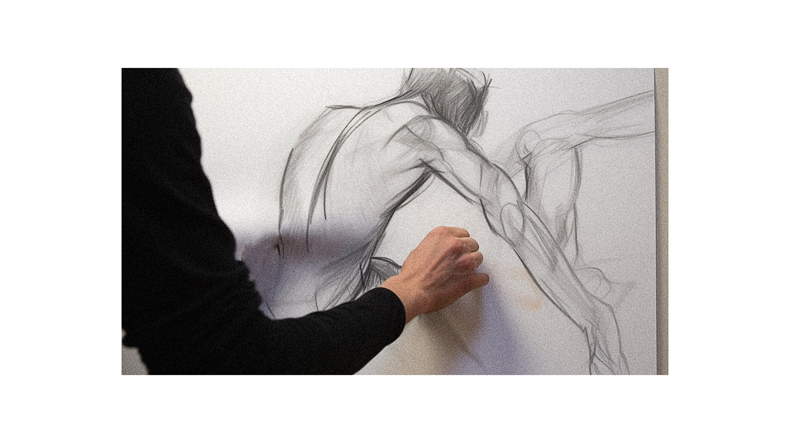Imagine being a sculptor, but instead of molding clay, you shape lines and forms on paper. That’s gesture drawing in a nutshell. It’s an artistic exercise that brings the human anatomy to life by capturing its essence through movement and form.
As an artist, your observational skills are tested as you strive to capture poses quickly before they change. Gesture drawing hones your hand-eye coordination while providing an understanding of human form like no other technique can. It is a warm-up exercise that trims perfectionism and boosts expressivity—like stretching before a run.
It improves accuracy, precision, and overall drawing prowess regardless of skill level. And the best part? You continue learning even after the sketch is done!
Stay tuned as we delve deeper into the role of anatomy in expressive gesture drawing.
What is gesture drawing?
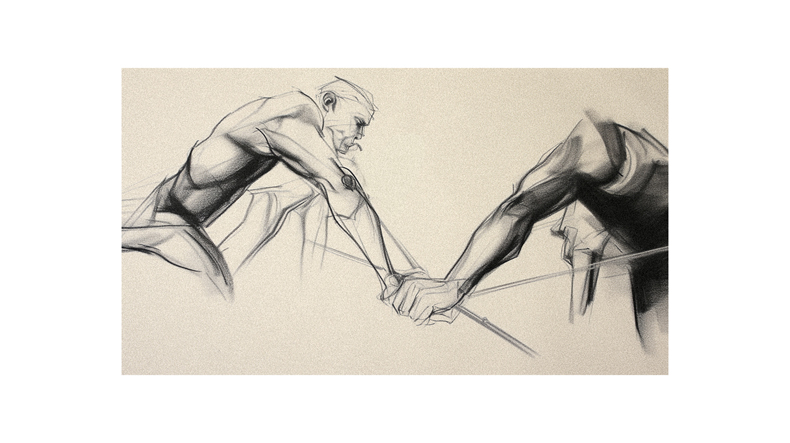
So, you’re wondering what gesture drawing is? Well, it’s a technique that captures the essence of a subject in its most basic form. It focuses on movement and shape rather than fine details, making it a quick and effective way to understand anatomy for more expressive artwork. Gesture drawing hones your observational skills improves hand-eye coordination, and gives you a better grasp of how the human body moves and interacts.
Importance of observational skills
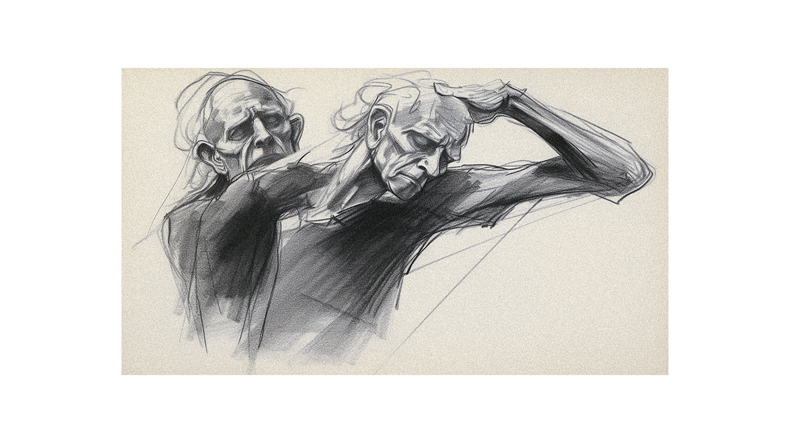
You’ll find that honing your observational skills is crucial in capturing life-like poses and movements. Interestingly, a study by the University of Lincoln found that drawing from observation can improve visual memory by almost 50%.
So, don’t just look at your subject – observe! Notice the form, movement, and expression. This will help you create gesture drawings that truly capture the essence of your subject’s pose and emotion.
Building hand-eye coordination
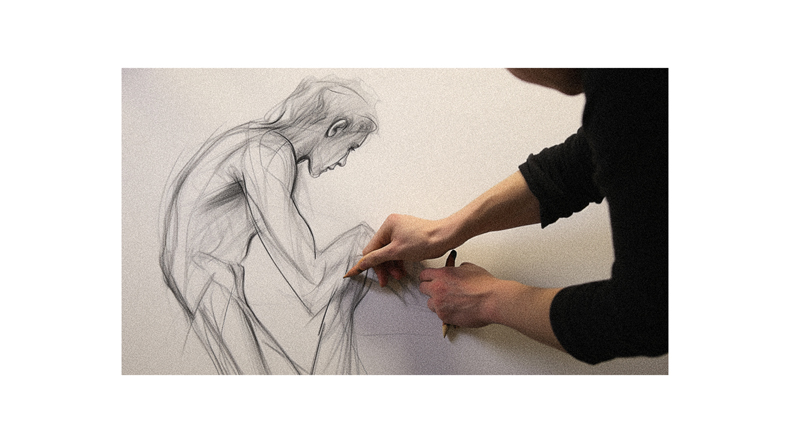
Building your hand-eye coordination is vital as it boosts the quality and speed of your sketches. This skill allows you to accurately capture what you see, precisely translating it onto paper.
Gesture drawing is perfect for training your eyes and hands to work together smoothly. With regular practice, you’ll find yourself rapidly sketching fluid, expressive gestures that truly encapsulate the essence of your subject’s movement.
Developing an understanding of form
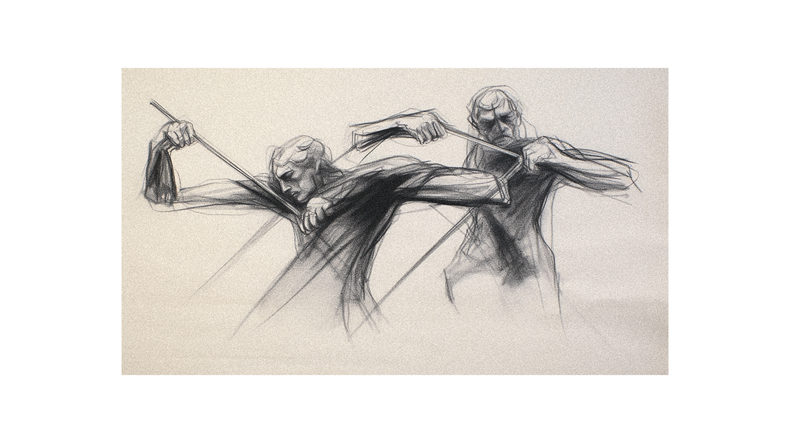
Through consistent practice in this technique, you’ll develop a deeper understanding of form and how it contributes to the vitality of your artwork.
Gesture drawing enhances your ability to see and capture the essence of a pose.
It helps you understand the fluidity and movement inherent in all forms.
It strengthens your capacity for dynamic expression.
And it nurtures an intuitive grasp of anatomy, breathing life into your figures.
Benefits of warm-up exercises
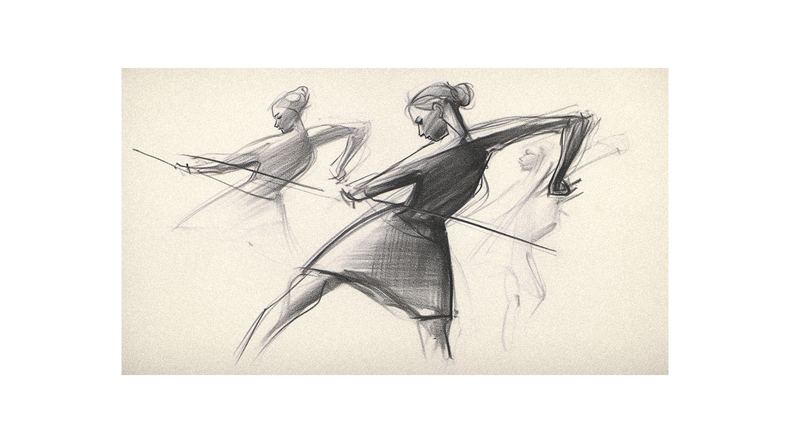
Diving headfirst into a complex piece without any warm-up can feel like trying to run a marathon without stretching – it’s possible, but you’re setting yourself up for potential hurdles.
Gesture drawing acts as your artistic stretch, loosening your hand-eye coordination and tuning your observational skills. It helps you breeze through the complex anatomy in expressive drawings, making them more fluid and true to life.
Improving line drawing skills
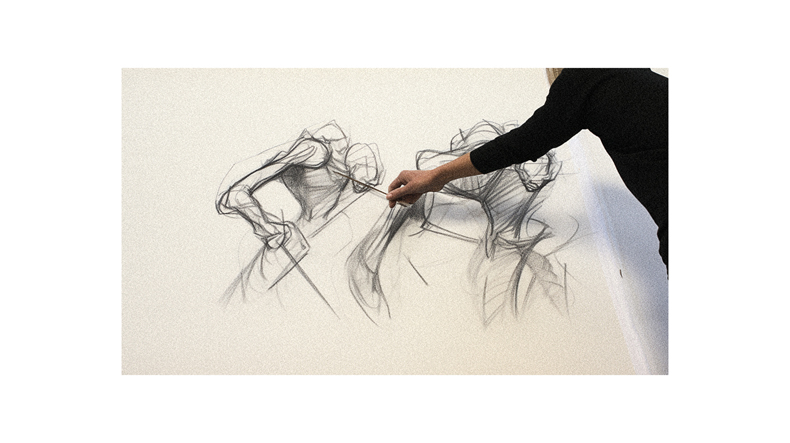
When honing your skills, don’t underestimate the power of simplicity. Gesture drawing is a perfect way to refine your line-drawing ability. It encourages you to capture the essence of an object or person quickly and fluidly, bypassing intricate details.
This focus on broad strokes and movements trains your eye to see shape and form, ultimately enhancing your accuracy in more complex drawings.
Capturing motion and action
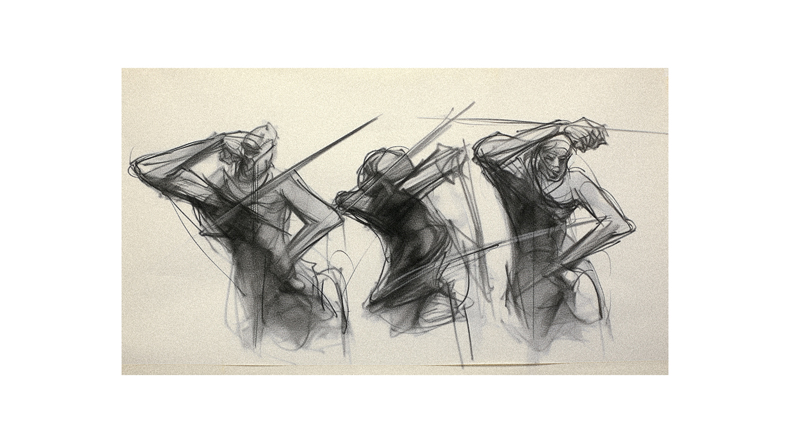
Capturing the dance of life in your artwork can be like trying to bottle lightning – it’s slippery, elusive, and over in a flash. But with gesture drawing, you can grasp the essence of motion. You can bring liveliness to your art. You can enhance your observational skills. And you can develop a sense of dynamic composition.
Keep practicing, and soon, you’ll see improvement in capturing action and movement!
Drawing from memory
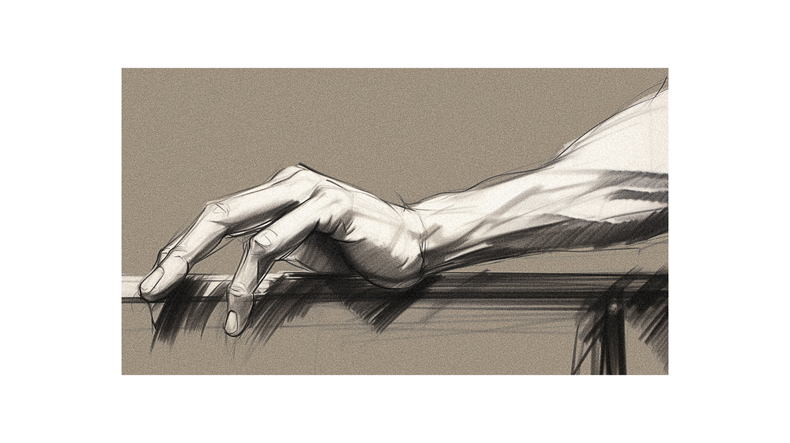
As you delve deeper into the art world, you’ll find that your ability to sketch from memory significantly improves with regular practice of quick, fluid sketches. Gesture drawing trains your brain to recall and reproduce complex poses and movements.
You’ll be able to capture the essence of a scene even after it’s gone, giving your artwork an extra layer of realism and expressiveness.
Focusing on proportions and posture
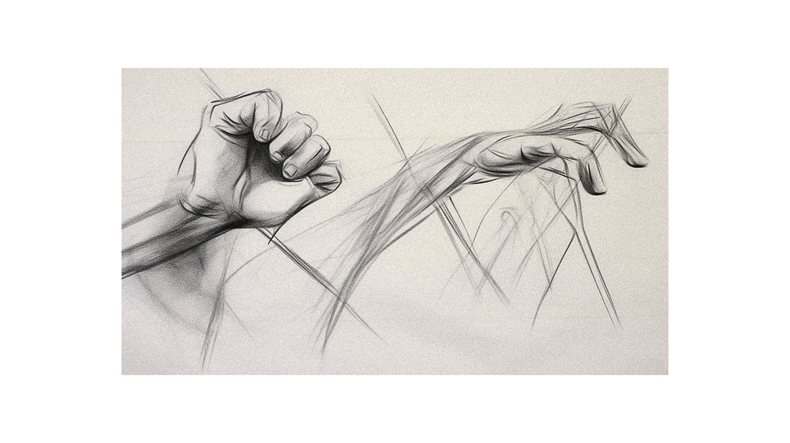
Mastering proportions and posture in your sketches is like finding the key to a treasure chest, unlocking a wealth of authenticity and believability in your artwork.
Proportions ensure anatomical correctness. Correct posture conveys the subject’s attitude and emotion.
Practicing these aspects enhances your observational skills. This practice leads to more expressive gesture drawings.
Focusing on proportions and posture adds depth to your art, enhancing its overall expressivity.
Having fun with drawings
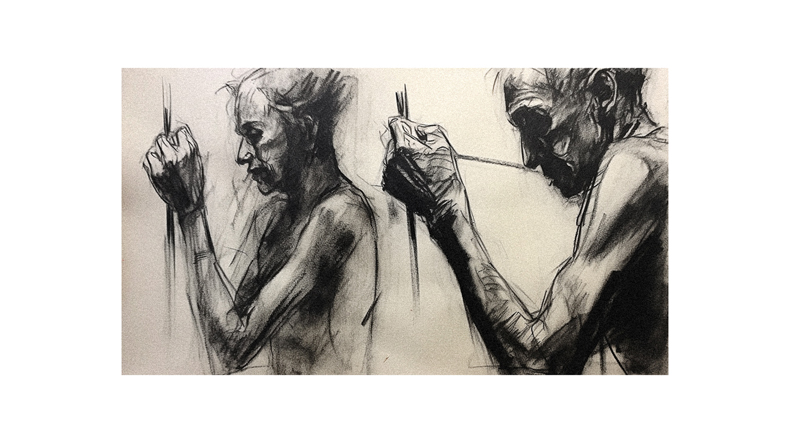
Please don’t fret about perfection; it’s all about letting loose and enjoying the process when sketching! Gesture drawing is meant to be fun and freeing.
You don’t need to nail every detail; instead, focus on capturing the essence or movement of your subject. This relaxed approach helps improve your overall drawing skills and keeps your passion for art alive and kicking!
Characteristics of gesture drawing
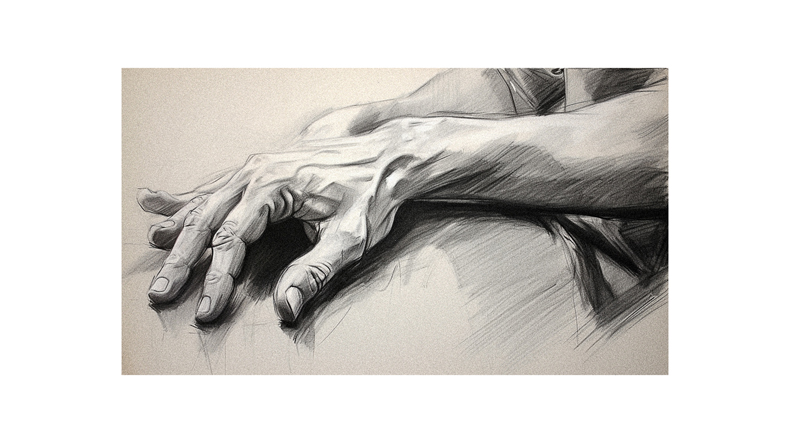
You’ll find that gesture sketching is a dance of the pencil, gracefully capturing the rhythm and flow of your subject in swift, fluid strokes. It’s about expressiveness and economy, focusing on broad shapes and movement instead of tiny details.
This style lets you understand anatomy better by drawing from different angles, helping create more lifelike figures. Ultimately, it’s an essential skill for improving your drawing accuracy.
Learning anatomical form
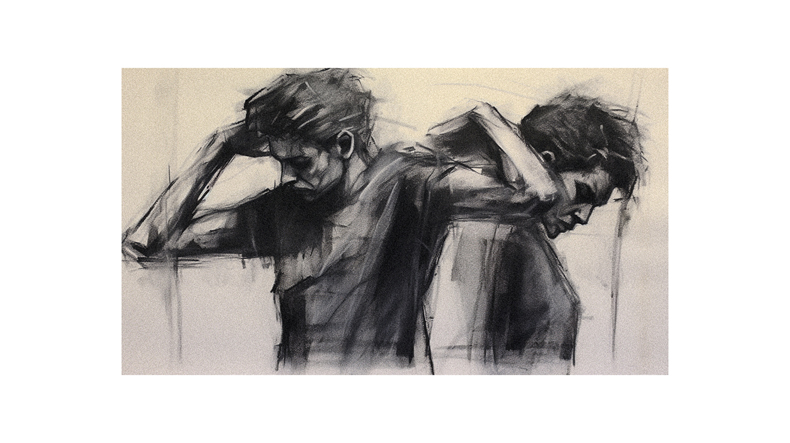
In your journey to become a more proficient artist, understanding the underlying structure of the human body can dramatically improve your ability to capture its essence in fluid and dynamic sketches. This involves studying detailed anatomy books or models for accurate bone and muscle representation.
She is attending life drawing sessions to observe real bodies in various poses.
Practicing repetitive sketching to imprint these anatomical structures in your memory.
Improving accuracy and precision
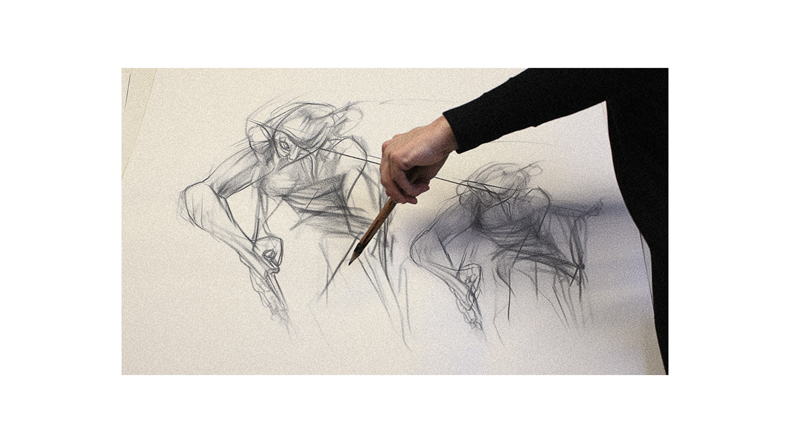
After mastering the basics of anatomical form, your next challenge is to hone your accuracy and precision in gesture drawing.
Knowledge of anatomy plays a key role here. By understanding the structure and movement of the human body, you can capture poses more accurately and precisely.
This will allow your gestures to express more life-like movements and emotions, making your drawings more compelling and realistic.
Continuing learning after gesture drawing
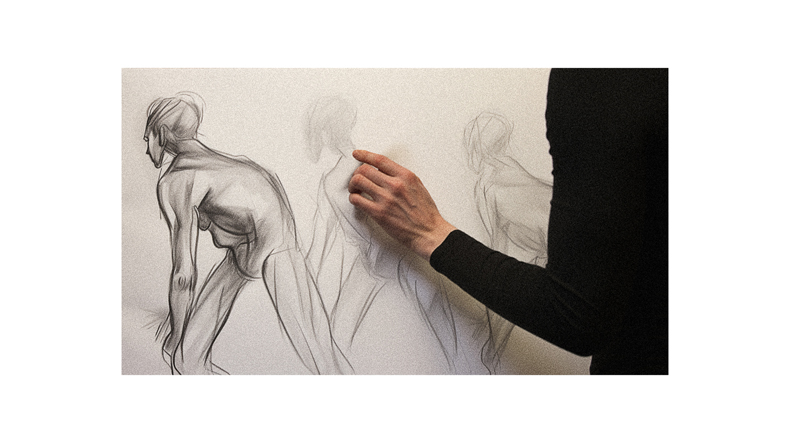
Don’t rest on your laurels once you’ve mastered gesture sketches; it’s just the tip of the iceberg in your artistic journey. Start exploring more complex aspects of drawing, like anatomy, lighting, and perspective. Understanding human anatomy enhances gesture drawings, making them more expressive and lifelike. It helps in accurately capturing movement and poses.
So keep learning; every new skill amplifies your artistry!
Capturing poses before they change
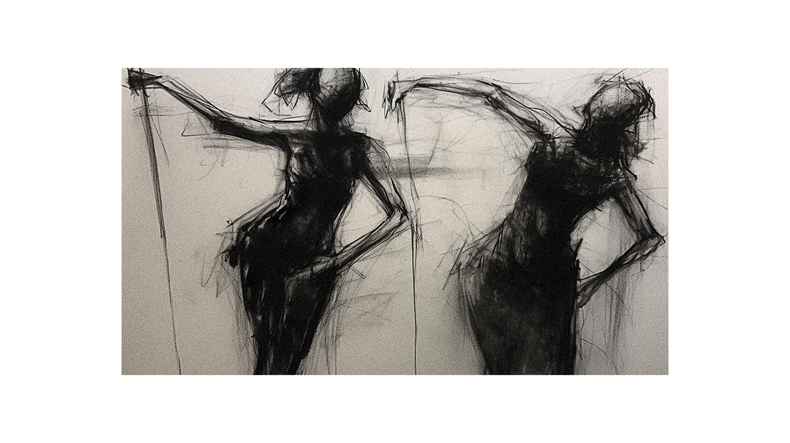
Capturing a pose swiftly before it changes can be quite the thrill, not to mention it sharpens your skills and brings an energetic dynamism to your sketches. Here’s how you can make the most of it:
- Observe closely: Focus intently on the subject.
- Sketch quickly: Don’t worry about details; capture the essence.
- Repeat often: The more you practice, the better you’ll get.
Beneficial for artists at any skill level
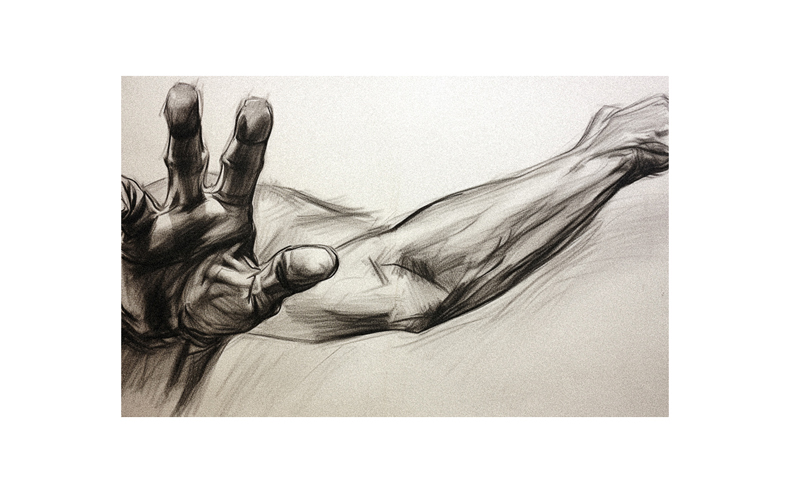
Regardless of your current ability in sketching, embracing this quick-fire approach to capturing movement and form can truly transform your artistry. Gesture drawing isn’t about precision or perfection; it’s about feeling and expressing the body’s rhythm on paper. It helps you loosen up, trust your instincts, and explore creativity without boundaries.
So, no matter what level you’re at, try gesture drawing – it could be a real game-changer.
Follow us on Pinterest for more tips, tutorials, and artist reviews!

